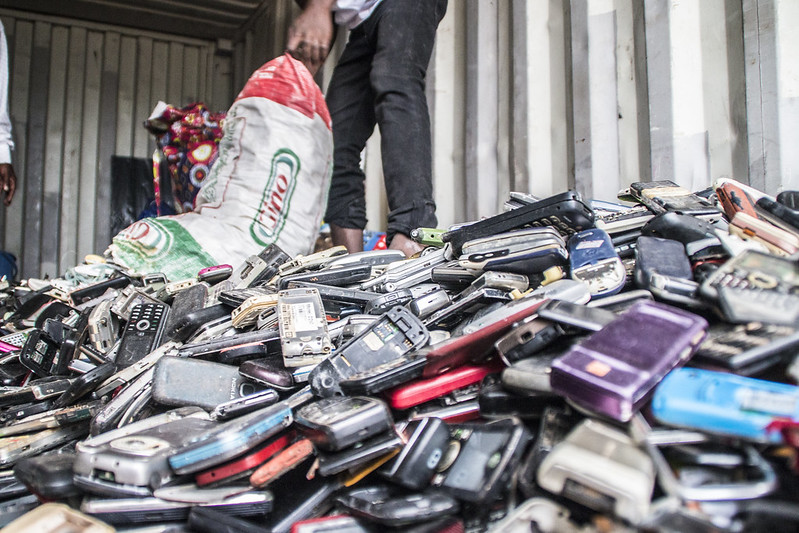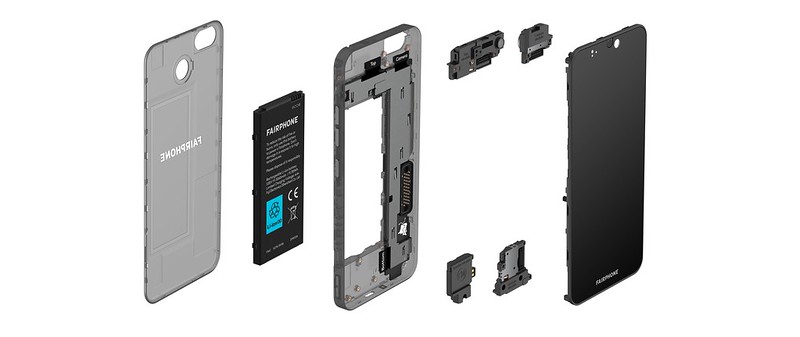Very few people can imagine life without a smartphone, and after all, nowadays little works without digital tools or services. But data traffic, as “disembodied” as it may seem, requires an infrastructure of servers, data centres, transmission technologies and, of course, corresponding devices. This means that our digital world carries heavy baggage with it: constantly growing energy consumption, the often exploitative and environmentally harmful production of smart tools, and at the end of their often far too short lives, they end up in the bin as electronic waste.
Let’s take a closer look at the latter point: our consumption of electrical appliances is responsible for the fastest growing share of the global waste mountain. According to the United Nations Institute for Training and Research’s Global E-Waste Monitor, an estimated 53.6 million tonnes (Mt) of e-waste were generated worldwide in 2019. That is equivalent to the weight of about 6,800 Eiffel towers. According to the report, Asia generated the greatest volume of e-waste in 2019 — some 24.9 Mt, followed by the Americas (13.1 Mt) and Europe (12 Mt), while Africa and Oceania generated 2.9 Mt and 0.7 Mt respectively.
The consequences for people and the environment are fatal. More than half of this huge mountain of waste is shipped cheaply to countries in the global South. There, the valuable raw materials are recovered under often inhumane working conditions and considerable environmental pollution, whereby the local workers are exposed to enormous health risks. The same also applies to the extraction of raw materials and production: our smart devices largely come from countries where labour rights and environmental standards are disregarded.
The “Better” Smartphones
More sustainable alternatives are still hard to find. But there are some companies and initiatives that support the change to a resource-saving circular economy with sustainable materials, clever recycling methods as well as advocating for a more conscious use of raw materials and fair working conditions. Fairphone and Shiftphone prove with their smartphones that a durable and environmentally friendly design is definitely possible. Their devices are modular and easy to repair, which saves them from a premature end as electronic waste. At the same time, the companies pay attention to fair wages and working conditions, refrain from child labour and focus on resource-saving production. Nager IT has dedicated itself to the topic of computer mice: With fair production, the association wants to promote the development of fair IT. Meanwhile, Recable produces USB cables that are 90 percent recyclable.
Repair, Buy Used, Donate
Often, appliances are quickly replaced by the latest generation and worn-out and broken appliances are disposed of with household waste – or they gather dust in our drawers. Not only is this not sustainable, but valuable resources and raw materials are wasted. One tonne of e-waste from computers and laptops, for example, contains about 70 kilograms of copper, 140 grams of silver and 30 grams of gold. The production of digital end devices also causes considerable greenhouse gas emissions: The production of a laptop generates around 250 kilograms of CO2, for a smartphone or a digital voice assistant (Alexa etc) it is around 100 kilograms.
Repairing, buying used and donating are sustainable approaches to solving the problem, as this extends the life of the devices and allows them to be recycled. The German platform MeinMacher.de, for example, lists many recognised specialist companies that take care of defective devices. Talented hobbyists can find easy-to-understand repair instructions for all kinds of devices and a wide range of spare parts on the iFixit platform. Fully functional devices can be bought and sold on eBay or eBay Classifieds, and large online retailers such as Rebuy, Refurbed and Backmarket offer used devices with a guarantee.
New EU Energy Label Shows Repairability of Smartphones and Tablets
Illuminating electrical appliances: A new energy label is to be found on smartphones and tablets throughout the EU from 2025. The European Commission, in cooperation with the EU member states, has decided to introduce an EU energy label, which for the first time will indicate on a scale of A-E how well devices can be repaired. The label not only provides clarity for consumers, but hopefully gives manufacturers of smartphones and tablets a further incentive to design their products in an innovative and sustainable way. More information here.
For example, a German project “Hardware for Future” collects smartphones and tablets and then redistributes them to pupils from low-income families. A similar project in the UK, the childrens charity Little Lives, uses older donated models as the basis for technology education classes in schools, refugee centres and councils.
Last but not least, in many countries, government regulations are in place forcing some retailers to take back and properly dispose of electronic waste, although this may vary greatly between nations. In Germany, all supermarkets of 800 square metres or larger must accept smaller (25 centimetres or less) electronic waste, while in the UK stores with an electronics section 400 square metres or larger must also accept small e-waste. In the US, the rules vary even further between individual states.










